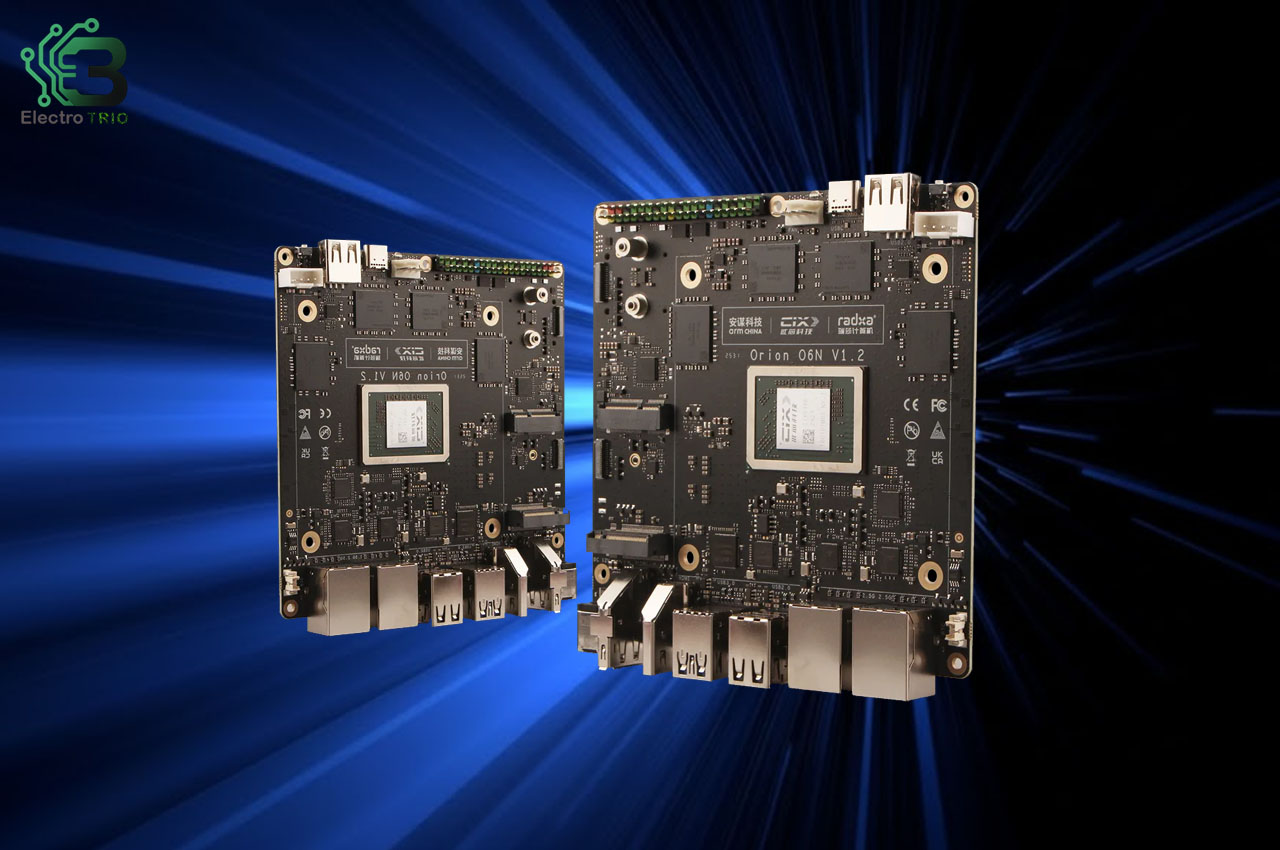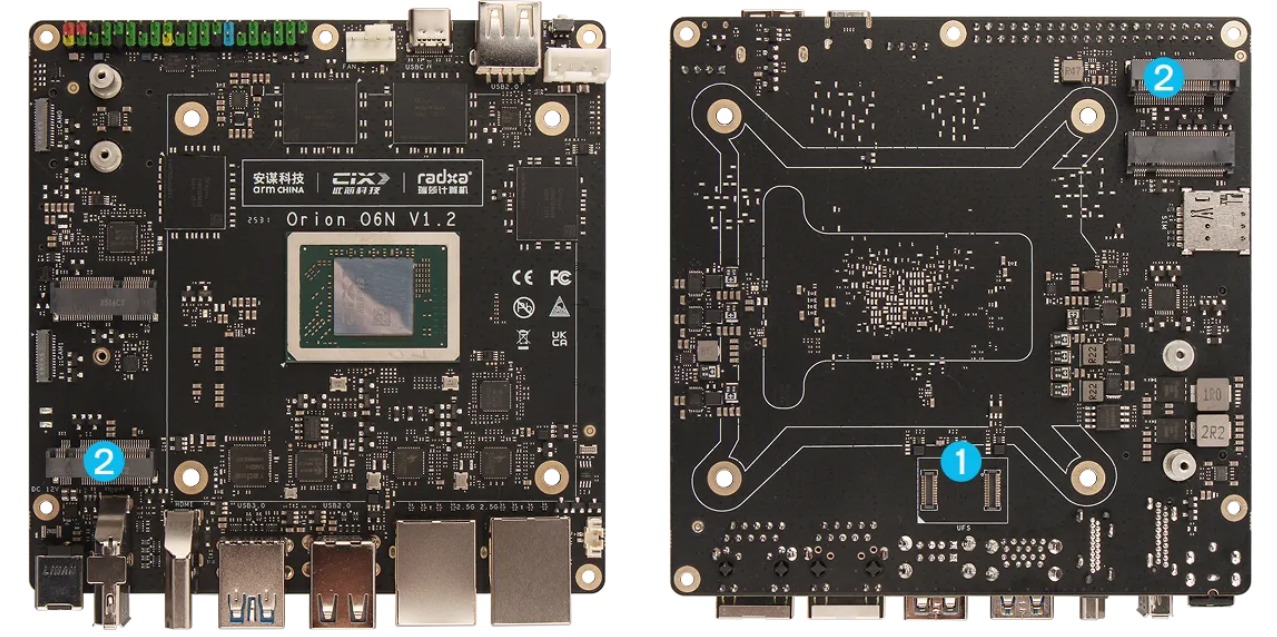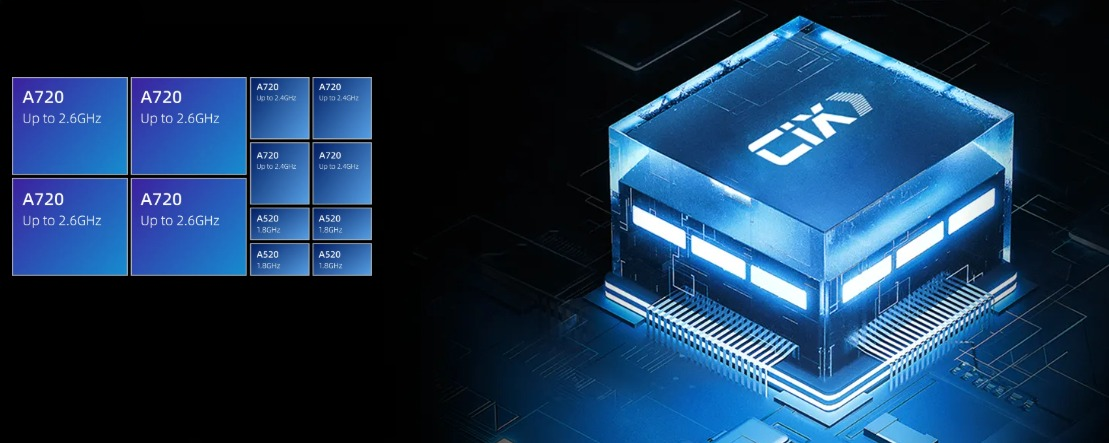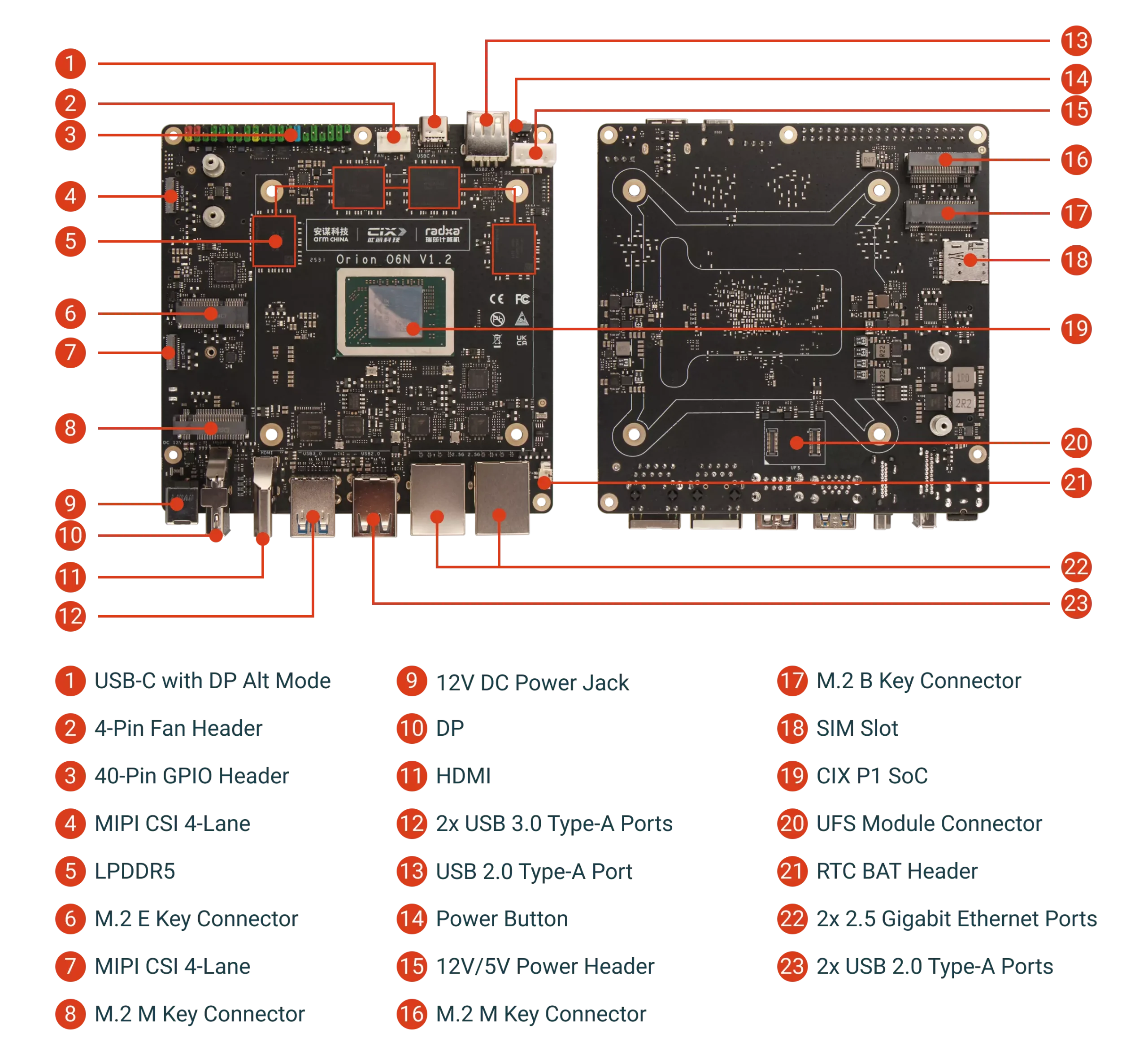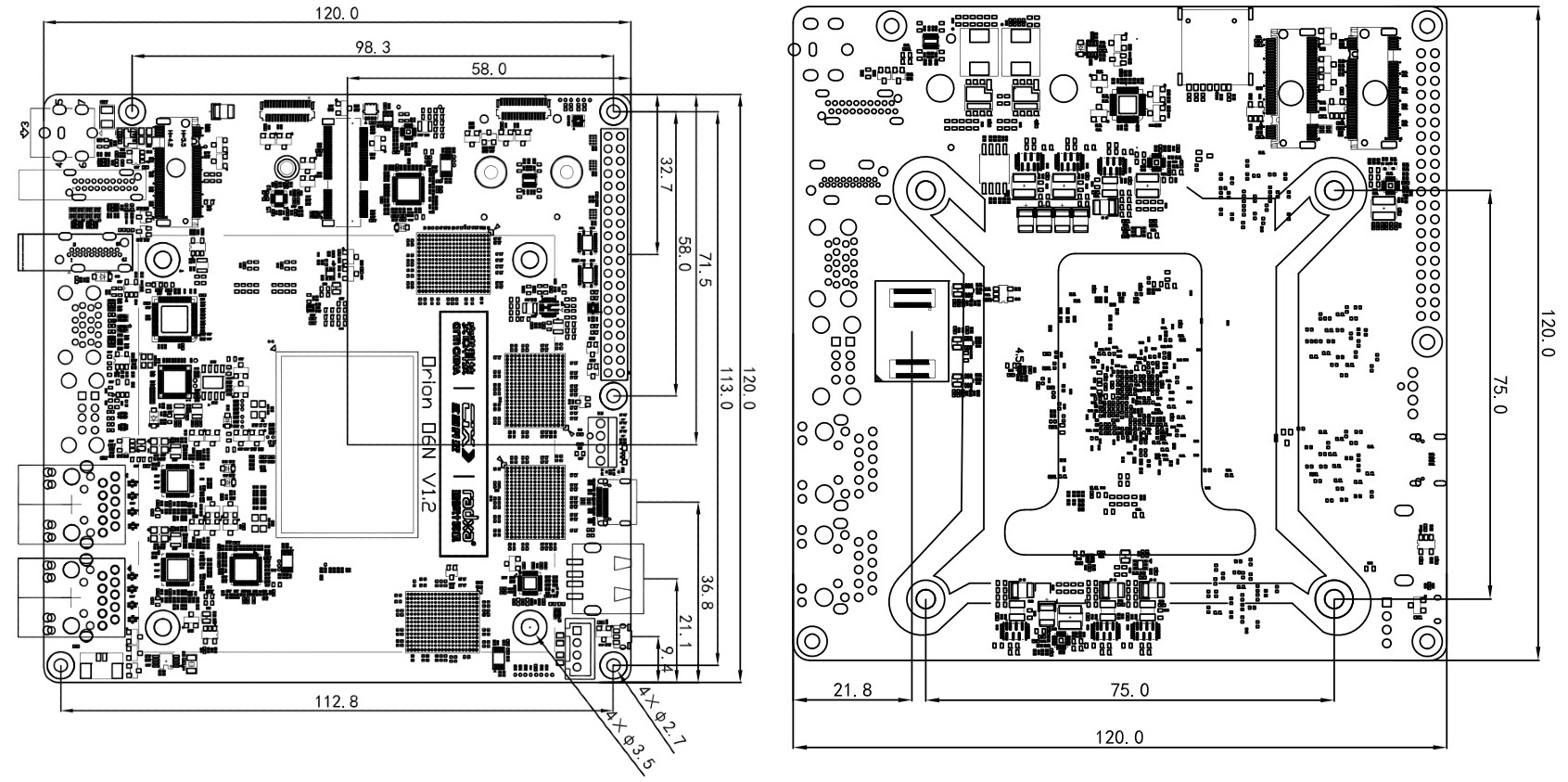The Radxa Orion O6N Nano-ITX SBC represents Radxa’s latest move into compact, high-performance ARM computing. This board condenses the feature-packed Orion design into a smaller Nano-ITX form factor (120 x 120 mm) while keeping the same focus on AI capability, expandability, and developer-friendly openness.
From the moment it starts, the Orion O6N shows its purpose — to deliver serious edge computing power in a compact footprint. It inherits the CIX P1 (CD8160) 12-core Cortex-A720/A50 SoC from its larger sibling, combining powerful processing with efficiency for edge AI, industrial systems, home servers, and maker projects that need performance without bulk.
The SBC comes with a 30/45 TOPS AI accelerator, up to 64GB of LPDDR5 RAM, and UFS and M.2 NVMe storage capability making it appropriate in compute and AI intensive workloads. It is loaded with flexible connectivity and I/O interfaces, which offers the developers some flexibility in developing next-generation embedded and edge applications.
1. Pluggable UFS module design, plug-and-play, convenient for system backup
2. Dual M.2 M key PCle Gen4 x4 NVMe slots for high-speed and large capacity requirements
Radxa Orion O6N SBC Specifications:
The Radxa Orion O6N Nano-ITX SBC consists of the CIX P1 (CD8160) SoC, a 12-core processor based on a tri-cluster architecture based on Armv9 architecture and Cortex-A720 / Cortex-A520 cores. This architecture provides a compelling performance and power efficiency trade-off for AI and edge computing applications. The onboard AI engine has up to 30 TOPS which can be used as a stand-alone AI engine up to 30 TOPS, and can be used to provide a total of 45 TOPS of AI compute capability when combined with the CPU and the graphic card. This renders the Orion O6N appropriate to computer vision, robotics, and machine learning inference tasks in the edge.
CIX P1 SoC architecture
For memory, the SBC uses soldered LPDDR5 RAM options up to 64GB, with a 128-bit bus clocked at 5500 MT/s, for high-speed data handling for compute-intensive workloads. On the storage side, the board has two M.2 M-key (PCIe Gen4 x4) slots for NVMe SSDs and a UFS interface of boot or other storage. It has also offered an M.2 slot to support wireless modules, as well as optional 4G connectivity using a SIM card, and will give developers the freedom to implement wireless connectivity or storage.
Connection The board has two 2.5 GbE Ethernet ports to provide high-speed and reliable connection, and WiFi 6 and Bluetooth 5.4 (optionally either onboard or via expansion). Display output is HDMI 2.0, DisplayPort 1.4, USB-C, DP Alt Mode, and eDP, which gives the user many options to use to choose display output. The Nano-ITX is a compact (120 x 120 mm) form factor, 12 V DC or USB-C PD input (up to 20 V) with in-built thermal management, a fan header, and a 40-pin GPIO header providing extra expansion to the embedded and industrial solutions.
Radxa Orion O6N hardware overview
Software Support:
Radxa supports the Orion O6N with Debian, Ubuntu, Fedora, and Android images and is working to upstream drivers into the Linux kernel. Some components, like the bootloader, power management, and device trees, are still under development, leading to minor issues with Ethernet, display, and driver stability. The Radxa community is actively improving support, though users testing GPU or NPU features may experience early-stage quirks.
A few days ago, we covered another SBC powered by the CIX P1 SoC — the Orange Pi 6 Plus, an open-source platform designed for embedded computing, edge AI, and high-performance prototyping. You can check it out for a closer look at its features and capabilities.
Radxa Orion O6N Dimensions
The Radxa Orion O6N Nano-ITX SBC is available on the Arace Tech store for $199 with a 32GB RAM configuration. More information and specifications can be found on the official product page.
